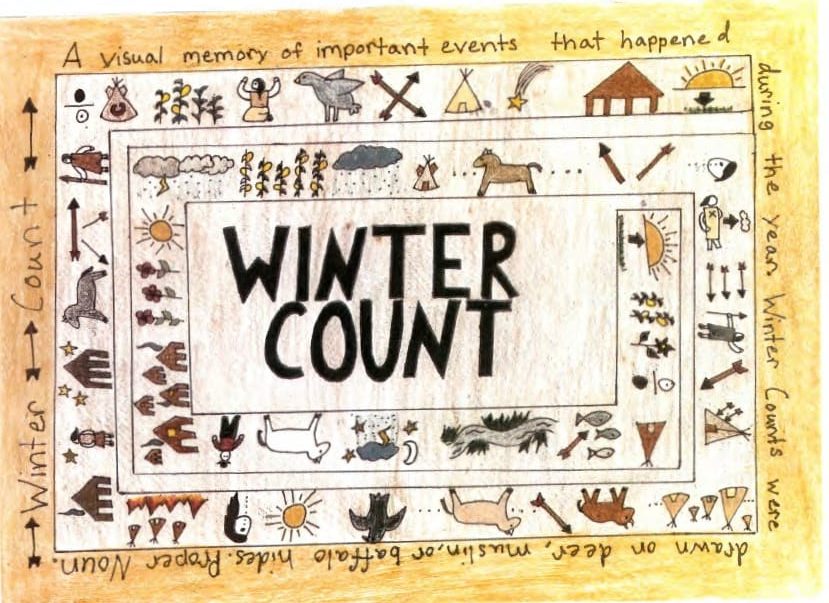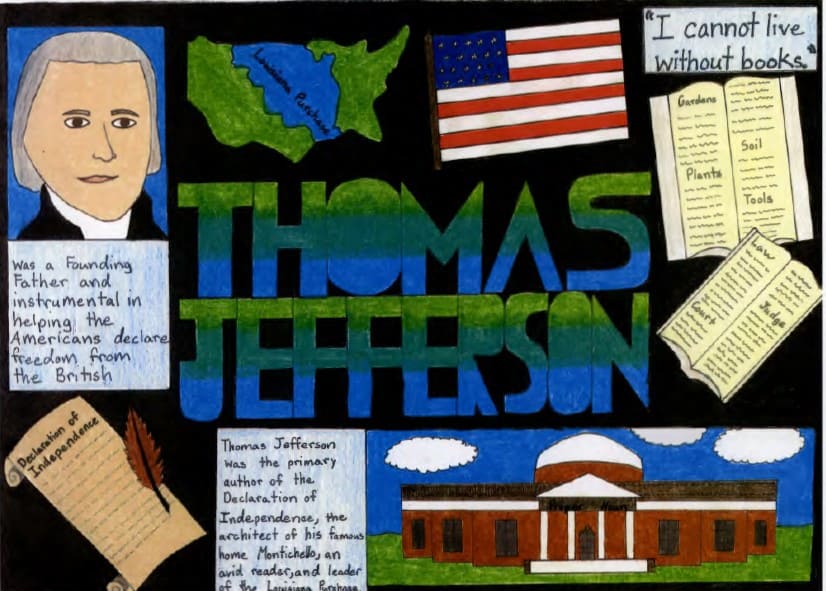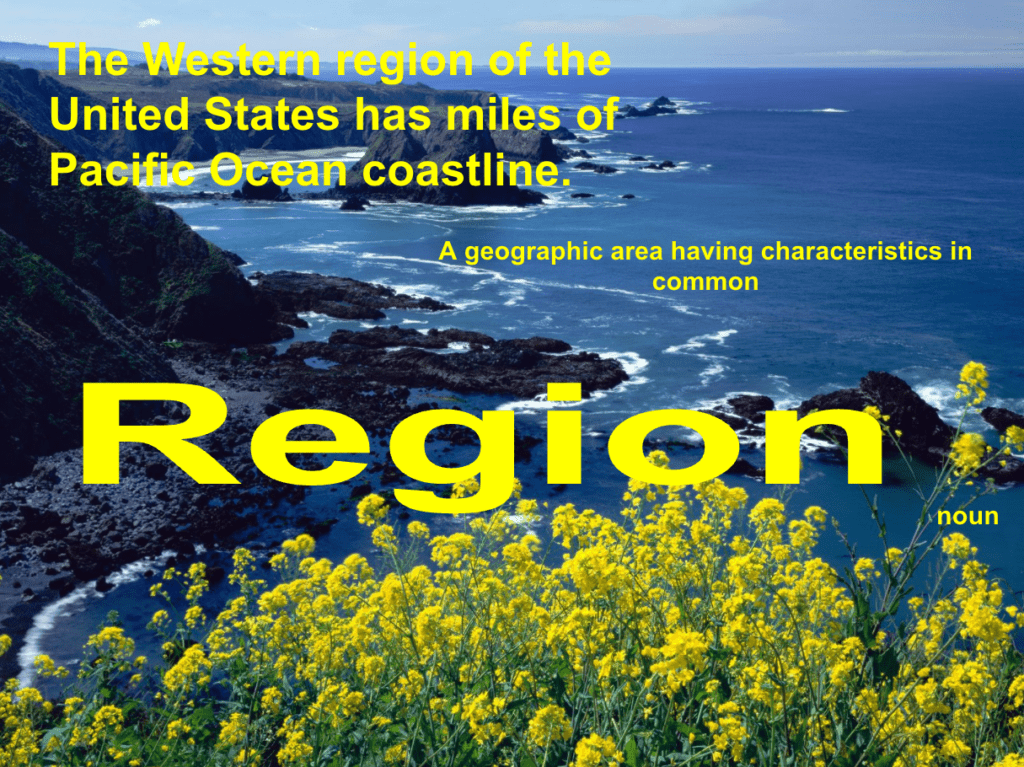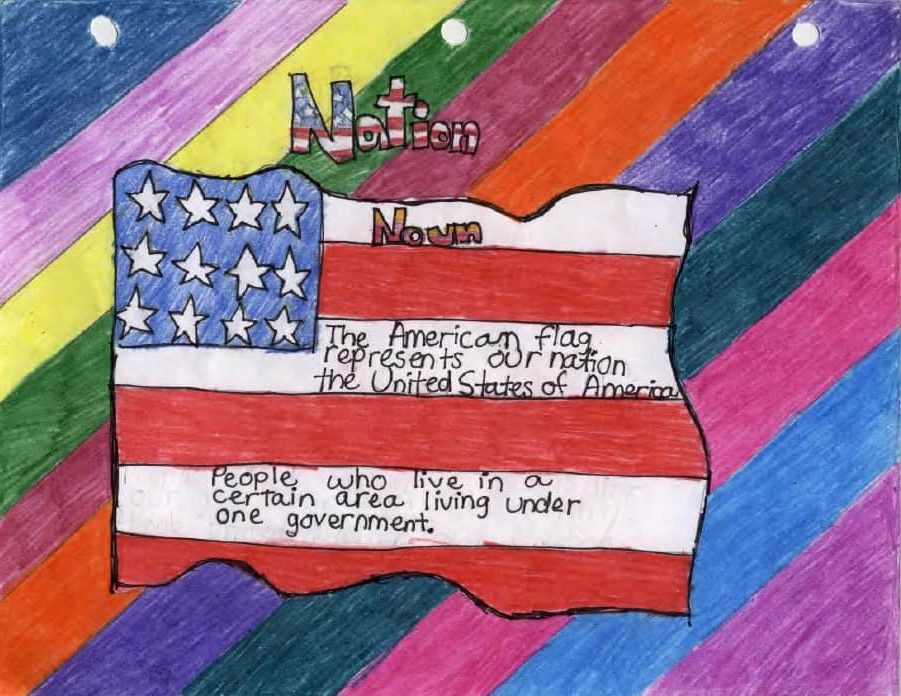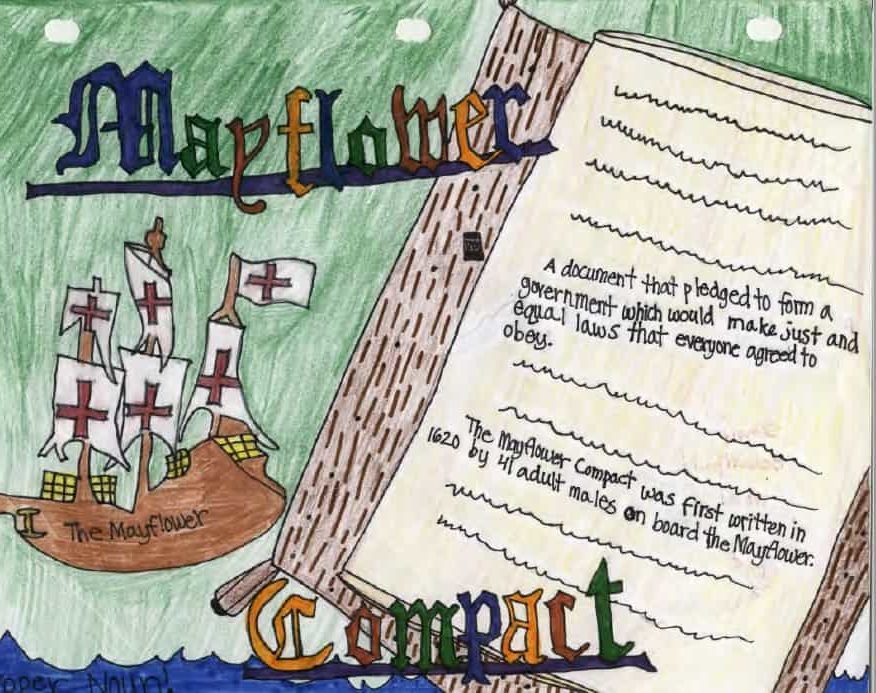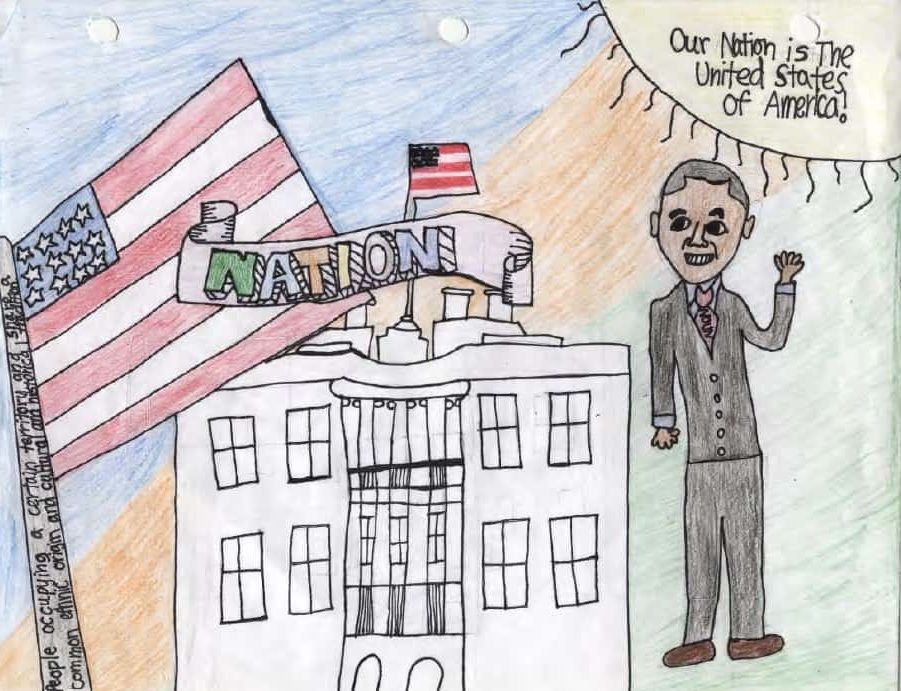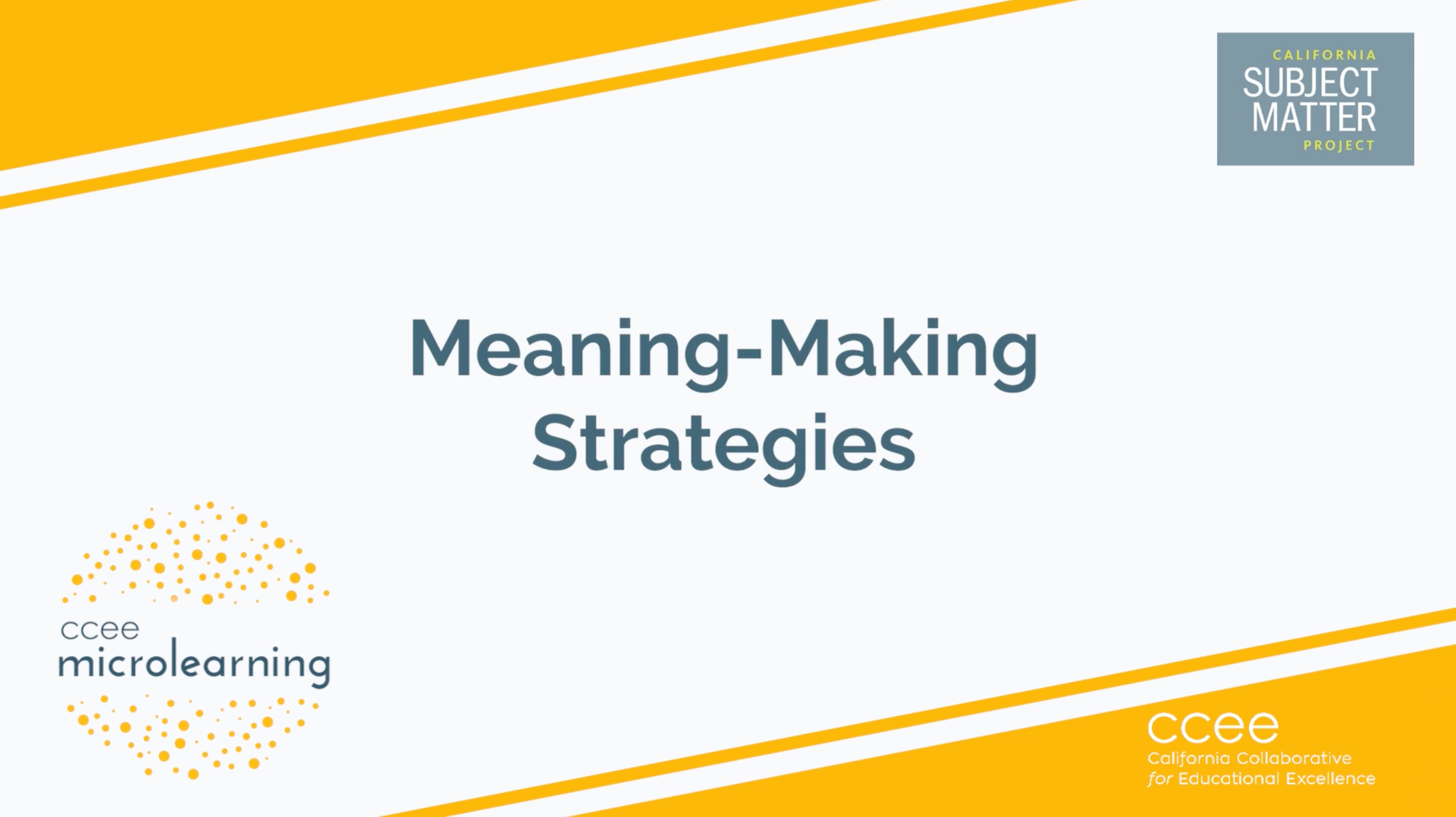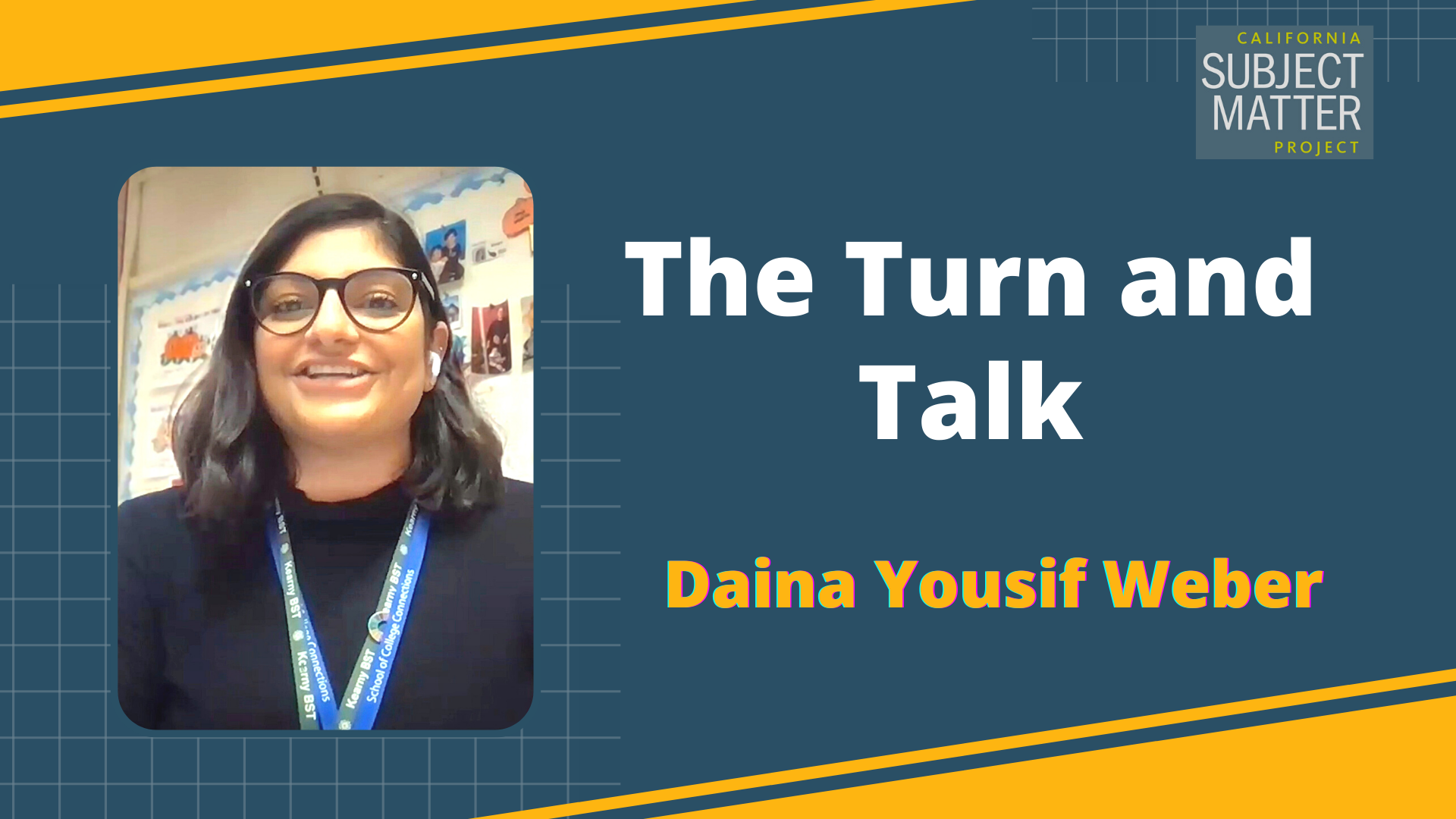Watch the Video
Presenter
Kate Bowen, Elementary School Teacher (ret.), Davis Joint Unified School District. Consultant, California History-Social Science Project
Transcript
It’s really hard for teachers to be out of their classrooms. Knowing that there is a competent substitute armed with some tried and true activities to keep students engaged, makes the whole experience a wee bit easier. Today I’d like to share a strategy that I have used throughout my 35-year teaching career. This assignment can be used in any classroom or grade level and any area of the curriculum, and would be especially good for long-term substitutes. I call this assignment the WOW! – or the Word of the Week.
For the WOW!, select a content word or phrase – a person, place, idea, or event – for the students. It is helpful if the students are familiar with that person, place, idea, or event. Then discuss the WOW! together, drawing on the students’ knowledge, brainstorming ideas, facts, and examples. I find it helpful to record the brainstorming session on the whiteboard and ask students to take notes on a sticky for their own use.
Then identify the part of speech for the WOW! You might note that a part of speech may not be familiar to younger students. Distribute a blank 8½ by 11-inch paper to each student. I like the papers to be three-hole punched in advance, creating a margin for student work. Students will keep their WOWs! for the year in a portfolio.
Explain that students will be creating a scene with the WOW! as its center, weaving in the part of speech, and an original sentence correctly using the word and showing their understanding. Students should aim to create a piece of art, using creative lettering, outlining all artwork, and of course choosing their direction when coloring. Students may select their own medium – colored pencils, markers, sharpies, etc. to complete the assignment. The entire page should be filled with the scene, tying all of the required components together. This is a good time to remind the students of the necessary components of the WOW! Have students keep this copy of the page in their WOW! portfolios for reference.
One does not need to be a fabulous artist to create a quality WOW! Having access to stencils, for lettering help, and a variety of images of the person, place, idea, or event will guide students in their choice of scene. Students are, of course, welcome to do their own research for image ideas. Here is a sample of a student who took advantage of a lettering stencil. These students completed their WOWs! – “nation” – with completely different scenes. Sometimes you have an over-achiever who just hits the ball out of the park week after week. This assignment can be modified for students who are hesitant artists or who have limited fine motor skills. One way to modify the WOW! is to have students complete a Google slide with all of the components, adding animation for effect.
Another modification that may be useful, especially to long-term substitutes, would be to work with the support staff on site and frontload the WOWs for those students who receive English Language support, Special Education, or reading services. Frontloading the WOW! for these students will establish academic language, provide grammar and vocabulary support, and develop writing skills, not to mention foster confidence in the classroom.
I would allow one full week for students to complete their WOWs. This encourages students to put forth their best efforts on the assignment. I usually had students work on their WOWs for about 20 minutes per day while I was reading aloud. Each WOW! is worth 10 points, and is used as a mini assessment to determine understanding of historical content. Corrected WOWs! are returned to students who keep the assignments in chronological order, creating a WOW! portfolio for the school year. I hope you find this strategy useful. And thank you for your dedication to our students.
Accompanying Materials & Resources
- Quick Guide: Word of the Week (PDF – 1 Page)
- WOW One-Page (PDF)
- Examples of WOWs
